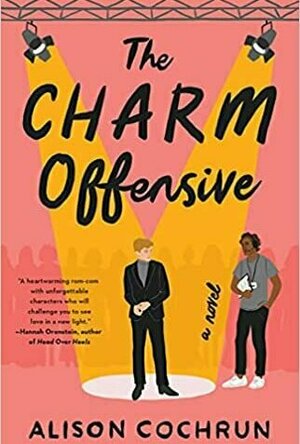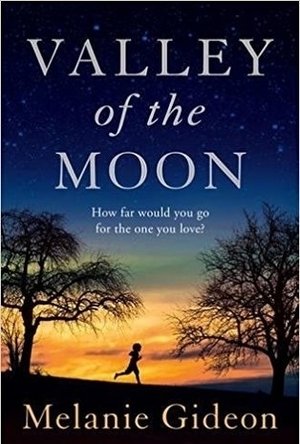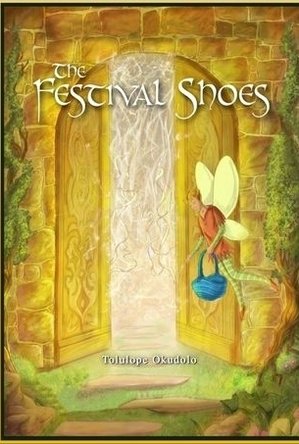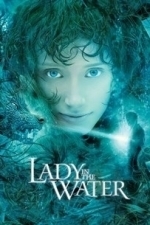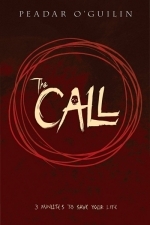
The Call
Book
THREE MINUTES You wake up alone in a horrible land. A horn sounds. The Call has begun. TWO...

Easy Cupcake Recipes - Learn How to Make Cupcake
Food & Drink and Lifestyle
App
Learn how to make delicious cupcake from this app. Check out our tips to make the perfect cupcakes....

Hannah's High School Crush
Games and Education
App
Hannah wants to look gorgeous on the first date with her secret high school crush Jack! Get ready...

Anya Dress Up & Pet Puppies
Games and Entertainment
App
The cutest little doll, Anya is a little girl who loves to play and care for her puppies. --...
Kristy H (1252 KP) rated The Charm Offensive in Books
Sep 2, 2021
"And maybe then Dev will forget that in his own life, happily ever afters are never guaranteed."
This is a truly lovely book, with a great romance filled with crackling tension combined with excellent points about mental illness and being loved unconditionally (or not, as the case may be). I fell head over heels in love with both Charlie and Dev--they are wonderful characters, whom you grow attached to easily.
Dev truly believes in the romance of the show when no one else does--including his ex, Ryan, and Charlie. Yet sweet Dev does not feel worthy of the love he so fervently believes in and can only offer up what he terms "Fun Dev," a light, easygoing version of his personality that does not reflect his true self. Meanwhile Charlie struggles with OCD and anxiety. He has never been in a serious relationship or given himself a true chance to explore whom he likes. The two feel so real and are so well-written: they just fly off the pages. I don't watch the Bachelor and other type shows, but if you do, I'm sure you'll love this book. Even if you don't though, there's so much to enjoy in the dynamics of the story and the examination of the pros and cons of reality shows--a look at how they treat women, racism, sexuality, and more.
"Then again, it turns out Charles Winshaw is no one's definition of a Prince Charming, no matter how much he might look the part."
Cochrun writes and describes anxiety so well and truly mental illness as a whole. It's treated seriously and given the respect it deserves. There is so much great representation in this book, include ace. And while it covers serious issues, at heart, this is a romance, and oh, it's so cute! There's so much steamy, sexual tension between Charlie and Dev. So many hot scenes, so much love and wondering and flirting... they are adorable together! This book made me smile and laugh and cry; it's so wonderful written and just bursting with goodness.
I do think Charlie probably could have gotten a new job in tech without going on a reality show, but oh well. Overall, this is such an excellent read. It's a wonderful blend of serious and fun and flirty and a great exploration into love and what happily ever after really means.
Hazel (1853 KP) rated Valley of the Moon in Books
Sep 5, 2017
For fans of The Time Traveler’s Wife (Niffenegger, 2003) this captivating story by Melanie Gideon is an alluring, spellbinding work of fiction about loving, being loved and finding somewhere you belong. With a touch of time travel in an otherwise typical reality, Valley of the Moon will excite, enrapture and touch readers’ hearts.
It is difficult to give a synoptic review without giving too much of the plot away. In short, the book contains the two lives of complete strangers who meet under extremely unlikely circumstances. It is 1975 and Lux Lysander is struggling to make ends meet as a single mother in San Francisco. Estranged from her parents, Benno has become her life; Lux would do anything for him. The other half of the story begins in 1906 in the Californian Sonoma Valley. Joseph has achieved his dream of creating an Edenic community where races and classes can live in harmony. Greengage is a self-sufficient society where everyone is seen as equal, however, something happens to shake up the peace – literally. A huge earthquake mysteriously leaves the valley unharmed but completely surrounded by a deadly fog. No one can leave and no one can enter, that is until Lux does.
Until the two characters’ lives collide, the narrative is fairly typical, but it quickly takes on a theme that most minds would attempt to debunk. Through a wall of fog, Lux can pass between 1975 and 1906, whereas Joseph and his friends can only stay in their own timeline. Lux begins to live a double life: one with her son Benno and one with the antiquated lifestyle of the Greengage community. Unfortunately, it is only possible to pass through the fog on a fall moon, and not necessarily every month.
Lux’s modern appearance and colloquialisms baffle the community but she soon finds herself a place amongst the inhabitants. For a while, Lux is able to keep her two lives separate, but one slip up causes her to temporarily lose the love and trust of her only son. Torn between her own flesh and blood and the only place she feels she belongs, Lux has to decide how far she would go for the people she loves.
One of the key themes of the novel is relationship. Although romance develops toward the latter stages of the story, the majority is focused on familial love and love between friends. Lux and Benno’s relationship is particularly important, especially when their love becomes strained by Lux’s secret dalliance with the past. The other significant theme is about finding oneself. Lux lives in an era where, despite developments in women’s equality, single mothers are still shunned. Conversely, in 1906 where historically things were worse for women, the egalitarian society feels much more like home.
Lux’s temerity is to be admired as she continues to visit the past despite it being beyond the bounds of possibility. More applaudable is her determination to win back her son as well as her distant parents.
Despite being set for the most part in the 1970s and 80s, Valley of the Moon has a futuristic air about it, with an element of fantasy and science fiction. It is almost a version of The Lion, the Witch and the Wardrobe (Lewis, 1950) but for adults, with more realistic themes. Melanie Gideon admits that she got the idea for the novel from the film Brigadoon (1954) in which the protagonist stumbles across a magical land in the woods. With similarities, Gideon has created her own version of this fairy-tale-like scenario.
Journeying through a range of emotions, Valley of the Moon is a story that engages readers from beginning to end. With ups and downs, the author explores the lives and personalities of the main characters, which develop beautifully over time. This book is not one likely to disappoint its readers.
Kyera (8 KP) rated Princess of Thorns in Books
Feb 1, 2018
The author makes use of these characters and plots in her novel. She chooses to include the ill-fated mother, brother and sister, as well as the villainous step-mother. Although that familial tie is not explicitly stated, the King was the children's father and he married the ogre. Thus, she would be their step-mother. And you thought you had a dysfunctional family?
In true fairytale fashion, there are ogres, witches, fairies, and ruffians. Not all are portrayed as you would expect. The ogres have evolved, or perhaps devolved depending upon who you ask. In the early years, the ogres were monstrous creatures that devoured souls whole. They did not control themselves, but feasted on the entire soul leaving nothing behind. As time went on, they were forced to change and limit how much they took. After a time, the ogres began to become smaller and take on much more human-like appearances. Their food source never changed and they prided themselves upon each soul they took, marking their bare skulls.
The Fae seem human, although they possess extra-human traits and magic. One may not think of fairies and immediately imagine a human-like creature with great dexterity, skill in battle, and a lack of guilt -but the Fair Folk are shown this way in the novel. A fairy can bestow a gift upon a human child, like beauty, courage, eloquence, obedience, or strength. But each blessing comes with a curse, as the magic always finds a way to turn the gift into a burden. There are untold consequences to the blessings that cannot be avoided. As such, the fairies stopped giving their gifts to human children.
As with most fairytales, there is an element of romance. The love story blossoms under unusual circumstances and not without its share of problems. The two characters get to know each other throughout the journey, but their are many secrets left untold. As they are discovered, the relationship is altered for good or bad. And in the end, a choice must be made.
Most importantly, the novel isn't entirely predictable (although the budding romance was expected). Generally, you expect good to triumph over evil in most modern retellings of the story - unlike their Grimm counterparts. The plot's climax was frankly a little anti-climactic, but enjoyable non-the-less.
I think the author showed an average amount of character development, although I usually think more would be incredibly beneficial. Certain aspects of the world were explained, but not vividly enough. The "show-don't-tell" method could have been employed here to create a richer, more immersive world. Overall, I was pleased with the author's lexicon, grammar, and spelling - which happens much less often than should reasonably be expected.
I would certainly read another novel by this author as I love stories based upon fairytales. If you read Alex Flinn, I would highly recommend this novel to you just keep in mind it is slightly darker. Readers of fantasy, romance, and the like will enjoy this book and should give it a chance. It seems to target the female demographic, but males should enjoy it as well.
Hazel (1853 KP) rated The Festival Shoes in Books
Dec 17, 2018
The Festival Shoes</i> by Tolulope Okudolo is a fairy story (literally) for young children. Although referred to as “pixies,” the illustrations provided by Eric Scott Fisher look like typical western imagery associated with the magical, winged creatures. The main character, Drumlo, is an ebullient pixie who is about to embark on his first trip to Earth in order to deliver a very important gift. With so much relying on his success, it would be absolutely awful if something went wrong.
Weaverton, the name of the land of fairies, is an invisible world that lies above the Earth. Whenever a child has a good thought or does something virtuous, a colourful string, unseen by the human eye, snakes its way up to the hidden land. Collected by pixies, these threads are woven into magnificent presents, which are delivered to the children as rewards on the day of the Great Festival. In order to prove himself as capable, Drumlo has been charged with safely transporting a pair of shoes to a truly deserving girl. With an effulgent thread as a guide, Drumlo sets off on his exciting mission.
The author is the founder of the publishing company Magnifying Children’s Horizons, which aspires to inspire children physically, mentally and spiritually about the natural world. Tolulope Okudolo’s author biography implies she is a Christian and likes to bring this aspect of her life into her writing. Although, as far as we know, fairies and pixies only exist in folklore, Tolulope retains the idea of the existence of God by referring to an unseen High King who lives above Weaverton. In this respect, the Great Festival and gift giving become similar to our Christmas tradition.
<i>The Festival Shoes</i>, however, is not intended to be a Christian book. Its purpose is to enhance children’s creativity and character by showing them the impact of their good and bad behaviour by emphasising the idea of receiving rewards. Whilst Drumlo is on his journey to Earth, he passes through the land where all bad thoughts and actions go. Compared with everywhere else, this place looks dull and gloomy, which goes to show what happens when nature is neglected and not cared for.
Another important message <i>The Festival Shoes</i> shows children is to have faith in themselves to do something for the first time. Drumlo had never been given such responsibility before, but he believed he could do it. Even though something goes wrong, his faith sees him through. He does not give up, everything works out in the end.
Reading the book as an adult, <i>The Festival Shoes</i> is not all that interesting. The ending comes about too quickly and, although the author is trying to emphasise that Drumlo’s faith saves the day, he does not physically do anything to fix what goes wrong – slightly misleading, perhaps?
The coloured illustrations that appear on every other page are pretty but do not help to tell the story. It is not a picture book for very young children; it is the next stage up. With discussion questions at the end of the book, <i>The Festival Shoes</i> is for parents and children to read together and think about their own impact on the world and nature.
Unfortunately, the book does not look professionally produced. The choice of typeface is uninspiring and the illustrations do not always slot into place well, leaving awkward layouts. As an eBook, this does not matter too much, but if it were to be printed, sales are unlikely to rocket.
Gareth von Kallenbach (980 KP) rated Lady in the Water (2006) in Movies
Aug 14, 2019
The film stars Paul Giamatti as Cleveland Heep, a property manager at a Philadelphia apartment complex known as “The Cove”. Cleveland spends his days maintaining the complex as well as interacting with the guests who reside there.
Cleveland is a very unassuming man who has a stutter that often causes him embarrassment when he is trying to hold a conversation. Life is busy but not very social for Cleveland who spends the majority of his free time in his apartment alone, and seems to have no social connections beyond his tenants.
All this changes when he discovers a young woman swimming in the pool after hours Cleveland is concerned what the tenants might think, but takes the young lady into his apartment as he suspects that she may be in trouble.
The lady is names Story (Bryce Dallas Howard), and she seems to possess an almost innocent naivety about her that belies her gentle nature. When Cleveland attempts to take the sleeping Story outside to rest on a lawn chair, he is confronted by a creature whose very nature exudes menace and danger which forces the duo to make a hasty retreat into his apartment.
Cleveland learns in time, that Story is a being from a fable that is here to contact an important figure in order to inspire them. Such inspiration is said to be a catalyst for events that will improve the future for mankind.
Naturally there are evil forces that wish to stop her from doing this and will take any opportunity they can to harm the frail Story and keep her from completing her task and returning home. This is a shock to Story, who thought she has completed her mission, and as such, under rules established by her people and the evil powers, is exempt from attacks and allowed to return home once a task has been completed. When this is not the case, and story is attacked as she prepares for her magical return, Cleveland draws upon the compassion of fellow tenants to protect Story.
Cleveland learns from a Korean tenant and her daughter about a legend that seems to underscore Story and her mission, and becomes eager to know more about the legend all the while keeping Story a secret as well as out of harms way.
In time it is learned what her true mission is and that a series of people are required in order to fully protect Story from the evil and allow her to accomplish what she is there to do, which in turn allows Story to connect with them and help many of them address the fears and concerns that they have thus inspiring and healing them with her magical abilities.
With a deadline rapidly approaching, Cleveland and the tenants must band together in order to help story complete her mission, and to determine which role each of them is supposed to play in order to keep her from harm and return her to her people.
While the film does have some scary moments, it is at its very core a fantasy film. The performances of Howard and Giamatti are strong and underscore that both are talents on the rise with bright futures ahead of them.
Shyamalan keeps the film moving at a nice pace that results in a tight film that does not drag on unnecessarily. Shyamalan is also plays a key part in the film and does solid work in front of the camera as well as behind it.
While the film may have a few plot holes and at times requires leaps of faith from the audience, it is a very warm film that blends humor and drama to create a very effective and enjoyable film.
Sophia (Bookwyrming Thoughts) (530 KP) rated The Last of the Firedrakes (The Avalonia Chronicles #1) in Books
Jan 23, 2020
<b>If there's one thing positive coming from me in regards to <i>The Last of the Firedrakes</i>, at least it has a spine.</b> Cheesy pun intended.
<b>Farah's debut has the bare bones of a novel. Her writing is vivid and there's definitely evidence the world is meticulously planned.</b> The main character, Aurora, is a character who's curious and inquisitive she wants to learn as much as she can about Avalonia from its residents from the moment she enters the world, which brings back my point of a <b>well-built fantasy world. The residents of Avalonia are colorful</b> we have an all-too-serious professor, a cheery "old" fairy, a jolly duke. There's high school drama, but it lasts for a chapter or two and isn't a problem.
But <b>lots of things just fell short.</b>
<b>The writing feels too amateur</b> I'm just not feeling it. It's just not good enough.
<div class="separator" style="clear: both; text-align: center;"><a style="margin-left: 1em; margin-right: 1em;" href="http://3.bp.blogspot.com/-Pbedm8KI2dE/VcY_-HnNY5I/AAAAAAAAE1U/pl4RL0fc5Ns/s1600/giphy.gif"><img src="http://bookwyrmingthoughts.bookblog.io/wp-content/uploads/sites/317/2015/08/giphy.gif"; width="320" height="179" border="0" /></a></div>
<b>There's this evil queen who may or may not be pulling the actual strings who wants to get rid of Aurora. There's this archmage who's on the hunt for this book that can enable him to control demons or some other evil creature</b>, and probably the one pulling the strings in the queen's ears.
<b>Then there's Aurora.</b>
Aurora is an <b>absolute damsel in distress</b>. I don't know if she cried much in her past Farah brings us from high school drama to Avalonia early on. <b>Aurora doesn't do much fighting she's saved every single time while doing almost nothing.</b> Every time, it's the <b>same mysterious dude named Rafe who Aurora can't stop thinking about constantly and falls "in love" with.</b>
At that point, I don't buy it. I don't buy it AT ALL.
<div class="separator" style="clear: both; text-align: center;"><a style="margin-left: 1em; margin-right: 1em;" href="http://1.bp.blogspot.com/-MwnX1lRcBWk/VcZAm_y4NcI/AAAAAAAAE1c/cKyY6P7O5BM/s1600/giphy.gif"><img src="http://bookwyrmingthoughts.bookblog.io/wp-content/uploads/sites/317/2015/08/giphy-1.gif"; width="320" height="177" border="0" /></a></div>
<b>I don't know how Rafe even knows where she is at the right time</b> is he just stalking her to make sure she doesn't get into trouble? Is it just a coincidence, because of all the times she's rescued, <b>it's beginning to <i>not</i> be a coincidence</b> and just makes me think <b>he's probably stalking her while making illegitimate excuses that the character falls for. Aurora falls into a tight snitch and seconds or minutes later, Rafe is coming to the rescue.</b>
Have I mentioned Aurora's <i>in love</i> with the bleeping guy? Yeah... she's falling in love with him after all he did was come to her rescue without her lifting a finger after so many bleeping times?
I think <b>the only thing I achieved from reading <i>The Last of the Firedrakes</i> is finding the new crown holder for Damsel in Distress.</b> Katy Swartz just passed on the crown to Aurora.
I think Aurora is going to have that crown for a <i>very</i> long time.
<a href="https://bookwyrmingthoughts.com/dnf-arc-review-the-last-of-firedrakes-by-farah-oomerbhoy/"; target="_blank">This review was originally posted on Bookwyrming Thoughts</a>
